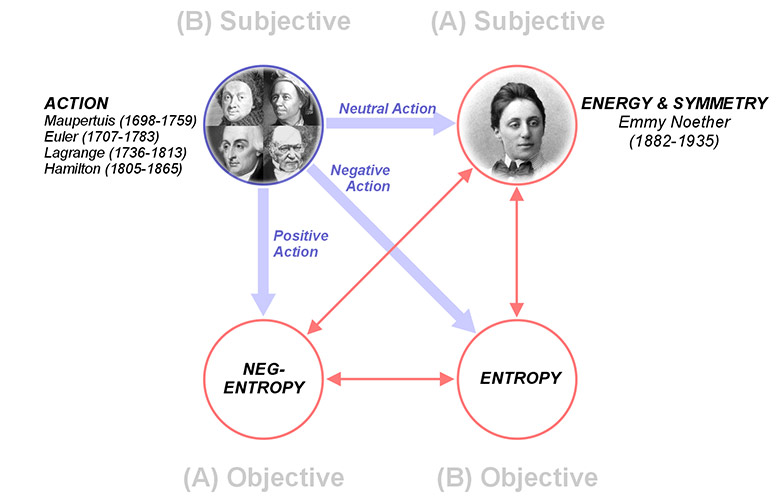Emmy Noether vs. P.R. Sarkar
 |
The title is parhaps somewhat a misnomer - more truthful might be "P.R. Sarkar and Emmy Noether". Emmy Noether was a mathematician and contemporary of Albert Einstein. She was arguably of the same calibre, but largely unrecognized, certainly in those days when women barely had access to academia. Today Noether's Theorem is one of the main foundation stones of modern physics, it not the single most, yet Emmy Noether is still largely unknown among the general public. Noether's theorem proves, somewhat simplified, that every symmetry in nature has a corresponding conservation law. "Symmetry" means consistency of a physical phenomenon within varying observational frames (so call "gauge") - hence the term gauge symmetry. The latter also forms the fundamental framework of Quantum Field Theory, known there as Yang Mills theory. For example, a light wave travels the same way in any direction. This represents a 3D rotational gauge symmetry. According to Noether's theorem this means that also some quantity must be conserved, in this case the energy of the light wave. This is so fundamental that one might easily overlook it - but she didn't, which easily puts her in the ranks of the greatest physicists of all times. Now what is P.R. Sarkar's corresponding theorem? In microvita cosmology, Sarkar recognized the Action Principle and Energy as two fundamental principles. The Action Principle is Krta Purusa, and Energy is Jina Purusa. Of the latter Sarkars says more specifically: "Knowing principle or supra-mundane knowledge; expressed energies of different characters - indestructible, interchangeable and inter-transmutable". So here it is: "Knowing Principle" refers to the gauge principle (observational frame), and "indestructible" means it is conserved. This is Noether's Theorem in the words of P.R. Sarkar, while placed in the greater context of Microvita Cosmology. To complete the picture, the main founders of the Action Principle in the Western tradition should also be mentioned: Maupertuis (1698-1759), Euler (1707-1783), Lagrange (1736-1813), Hamilton (1805-1865). As noted, the Action Principle is widely used in physics, but mostly as a mathematical tool, without acknowledging it as a fundamental principle in nature. Also, its use seems to correspond to, and be limited to "neutral microvita". This makes for a nice visualization of Sarkar's Four Chamber model, while including the "positive" and "negative" interactions as well. Energy, rather, Jina Purusa, that is, Noether's Theorem, could be seen as the mediator of entropy and neg-entropy. And the Action Principle controls all simultaneously - maintaining the cosmic equilibrium. Before saying this is very technical: this is exactly what defines biological life itself. Philosophically speaking, the physical body is made of the "Fundamental Factors" ("negative"), yet highly organized ("positive"), which implies mind. The connection between body and mind consist of Energy and Knowing, that is, the flow of cognizance of one's microcosmic existence which is, ideally, in macrocosmic equilibrium. |